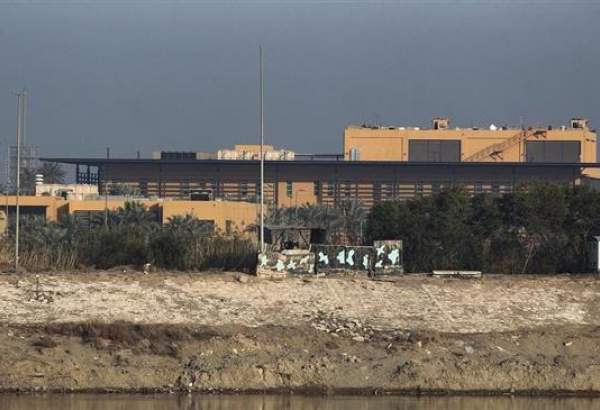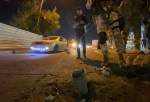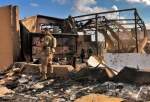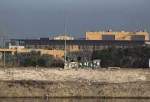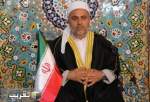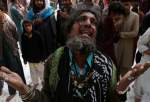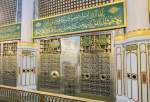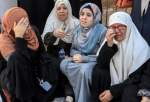A Thursday statement released by the Security Media Cell, affiliated with the Iraqi prime minister’s office, said the first missile fell near the headquarters of the National Security Agency, while the second one slammed into a square.
The statement added that the third projectile hit the residential Sheikh Omar area in the Rusafa district of Baghdad, damaging a civilian car.
Sabereen News, a Telegram news channel associated with Iraqi Popular Mobilization Units —better known by the Arabic name Hashd al-Sha’abi — reported that sirens went off warning of a rocket attack on the US embassy in the Green Zone at the Third al-Tawheed Base.
The report added that the sounds of C-RAM missile systems responding to the projectiles, followed by massive explosions, could be heard throughout much of the area.
There were no immediate reports of casualties and the extent of damage caused. No group has claimed responsibility for the attack yet.
Later on Thursday, a faction of Iraqi Hashd al-Sha’abi forces rejected the involvement of the anti-terror resistance fighters in the rocket attack against Baghdad’s Green Zone.
“The US embassy has so far not had a place in the equation of reactions from the Iraqi Resistance Coordination Committee. Should we decide to attack the facility, it will be struck with precision-guided munitions, not Katyusha rockets, to prevent collateral damage,” Qais Khazali, who leads the Asa’ib Ahl al-Haq resistance group, wrote in a tweet.
He added that Katyusha rockets are notorious for missing their targets and hitting urban areas, and Iraqi resistance groups will not utilize them in case the US embassy in Baghdad comes into such an equation.
On Wednesday, a barrage of rockets was fired at Ain al-Asad Air Base, where American military forces and trainers are stationed, in Iraq’s western province of Anbar.
Sabereen News, citing preliminary figures, reported at the time that five people were injured in the attack on the base, located about 160 kilometers (100 miles) west of Baghdad.
However, Colonel Wayne Marotto, spokesman for Combined Joint Task Force-Operation Inherent Resolve, sought in a post published on his official Twitter page to downplay the number of causalities, and put it at two.
A resistance group called Revenge of al-Muhandis Brigade claimed responsibility for the attack on Ain al-Assad, and vowed to defeat the “brutal occupation” of US forces.
It said it struck the base with 30 BM-21 Grad rockets, adding that the projectiles hit their targets accurately.
Across the border in Syria, militants from the so-called Syrian Democratic Forces (SDF) claimed to have repelled drone attacks near a US-run military base at al-Omar oil field in the country's eastern province of Dayr al-Zawr.
The attacks come amid growing anti-US sentiment, which has intensified since last year's assassination of top Iranian anti-terror commander Lieutenant General Qassem Soleimani in Baghdad.
General Soleimani, the commander of the Quds Force of Iran's Islamic Revolution Guards Corps (IRGC), and his Iraqi trenchmate Abu Mahdi al-Muhandis, the deputy head of the Popular Mobilization Units, were targeted along with their companions on January 3, 2020 in a terror drone strike authorized by former US president Donald Trump near Baghdad International Airport.
Two days after the attack, Iraqi lawmakers approved a bill that requires the government to end the presence of all foreign military forces led by the US in the country.
On January 8, 2020, the IRGC targeted Ain al-Asad with a barrage of missiles to retaliate the assassination of General Soleimani.
According to the Pentagon, more than 100 American forces suffered “traumatic brain injuries” during the counterstrike on the base. The IRGC, however, says Washington uses the term to mask the number of the Americans who perished during the retaliation.
Iraqi resistance groups have warned that they will treat the American troops as occupying forces and take up arms against them if they refuse to leave their country.

